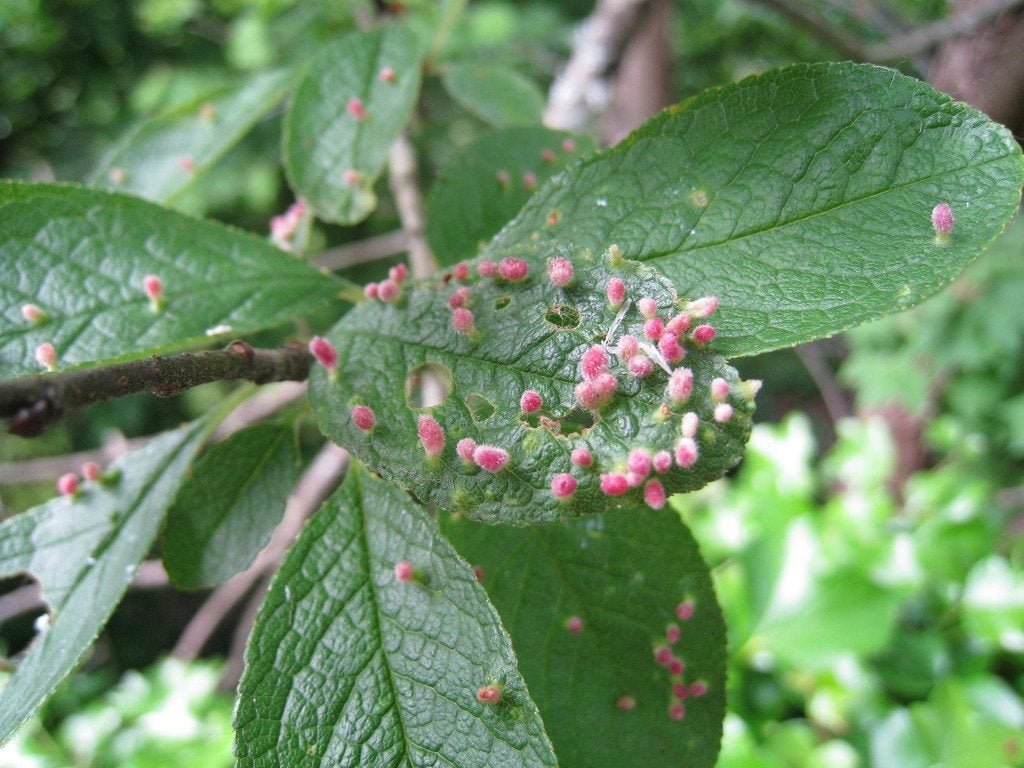What Are Eriophyid Mites: Tips For The Control Of Eriophyid Mites On Plants

So your once beautiful plant is now covered with unsightly galls. Maybe your flower buds are suffering from deformities. What you may be seeing is eriophyid mite damage. So what are eriophyid mites? Keep reading to learn about eriophyid mites on plants and their control.
What are Eriophyid Mites?
Eriophyids are one of the smallest of all plant-feeding mites at less than 1/100th of an inch in length. Since the mite is so incredibly small, it is very difficult to identify these translucent bugs. However, most identification is based on the host plant and the nature of the plant tissue damage. There are over 300 known eriophyids with only a few being known as a serious pest. These mites are different from spider mites in that they are very particular about the host plants that they choose. Eriophyid mites are known by many names including blister mites, gall mites, bud mites, and rust mites depending on the type of damage that they cause. Female mites spend the winter in the cracks of tree bark, in leaf buds, or in leaf litter. They are able to endure extreme weather conditions and begin feeding with the onset of spring. They can lay about 80 eggs over a month that produces both male and female mites. After mites hatch, they go through two stages of development. Maturity can take up to two weeks. Males do not fertilize females but leave sacs on the surface of leaves that females walk resulting in fertilization.
Eriophyid Mite Damage
Bud mites cause damage to the growing buds of particular plants and fruit. Gall mites cause the tissues in plant's hairs to develop improperly. This is commonly seen on the leaves of maple trees. Blister type eriophyid mites on plants can cause damage very similar to gall mites, however, the damage from the blister mite occurs in the internal leaf tissue, as opposed to the leaf surface. Pear and apple leaves are often the chosen targets of rust mites. Although the damage from rust mites is not as severe as that of the other mites, it causes rust on the outside of leaves and early defoliation may occur.
Control of Eriophyid Mites
Eriophyid mite control involves keen observation. If you suspect mites, check leaves for blisters, bronzing, or galls. Although the aesthetic damage from mites causes plant owners to grieve, most plants have no problem tolerating a large number of mites. Rarely and only under very serious infestations is it suggested that pesticides be used to control the mites. In fact, eriophydid mites are a perfect meal of predatory mites, which help control outbreaks of damaging spider mites. Spraying broad-spectrum insecticides only kills these necessary predatory mites. Therefore, tolerating some disfiguration and pimples on plant leaves is, in fact, an excellent pest management practice. If you wish, you can prune off the damaged plant parts and use a dormant oil to kill overwintering female mites.
Sign up for the Gardening Know How newsletter today and receive a free copy of our e-book "How to Grow Delicious Tomatoes".